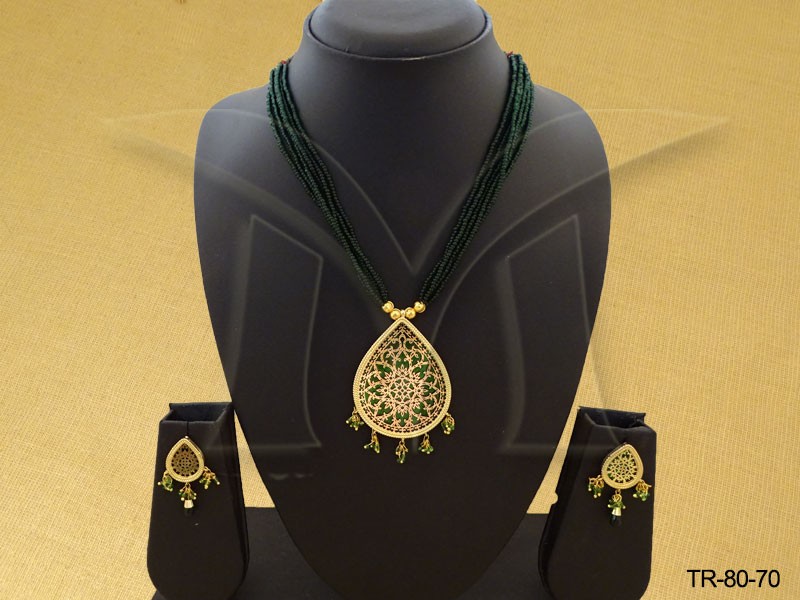Rajwadi Traditional Double Thewa Pendant
Thewa is a 400-year-old art of making jewelry and has its origin in Rajasthan. It started under the patronage of Maharawat Samant Singh in the Pratapgarh district of Rajasthan. Thewa, which means “setting” in a literal sense, is a unique way of fusing gold and colored glass to create magnificent pieces. The invention of this at is credited to Nathu ji Soni, whose family kept the craft a secret to be passed from father to son only. It is said that the same family has been practicing the art ever since it was invented and the secret still remains with them. They call themselves “Raj-Sonis” now and some of their family members have received awards from the Government and also from UNESCO. To motivate this form of art, the Government of India issued a postage stamp in the year 2004 commemorating Thewa. Thewa continues to be an inimitable form of art because of the amount of labor, craftsmanship and detail that goes in the making of a single piece of jewelry.
The basic Thewa jewelry is made on a mottled sheet of pure gold combined into a colored glass which then constitutes a single unit. This entire range of jewelry is handmade and sometimes a single piece of jewelry takes more than a month’s time. The glass that is blended with the gold, is treated by a special process which renders a dazzling effect and in turn highlights the gold patterns. Over a period of time, the makers of the jewelry have come up with customizations to the traditional way of crafting a Thewa piece. Thewa is now being combined with the Kundan art which is again a traditional art of jewelry and adds another dimension to the original Thewa.

